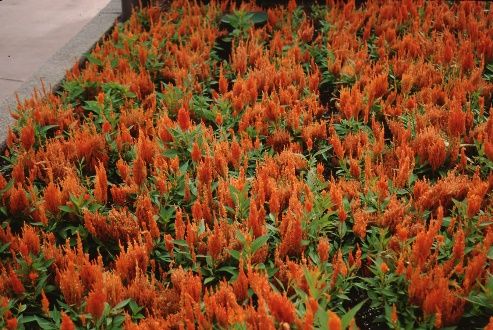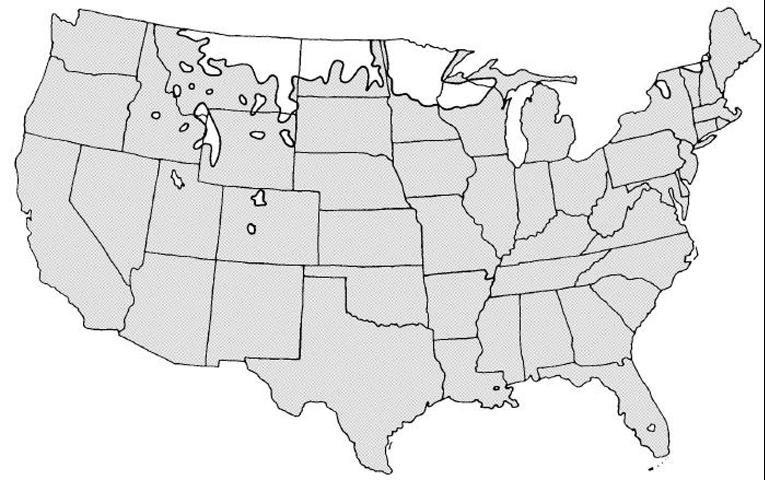Introduction
Celosia has two types of flowers, the cockscomb, Celosia cristata and the plume types, Celosia plumosa. The tight, velvety texture of the cockscomb flowers look like brain tissue to some people. The fluffy, light, airy texture of the plume types blow freely in a breeze and are planted more often. Both come in a variety of colors.

Credit: Edward F. Gilman
General Information
Scientific name: Celosia plumosa
Pronunciation: see-LOE-see-uh ploo-MOE-suh
Common name(s): cockscomb
Family: Amaranthaceae
Plant type: annual
USDA hardiness zones: all zones (Figure 2)
Planting month for zone 7: Jun; Jul
Planting month for zone 8: May; Jun; Jul
Planting month for zone 9: Apr; May; Jun; Jul; Aug; Sep; Oct; Nov
Planting month for zone 10 and 11: Apr; May; Jun; Jul; Aug; Sep; Oct; Nov
Origin: not native to North America
Invasive potential: may self-seed each year
Uses: edging; mass planting; container or above-ground planter
Availability: generally available in many areas within its hardiness range

Credit: undefined
Description
Height: .5 to 2 feet
Spread: .5 to 1 feet
Plant habit: upright
Plant density: moderate
Growth rate: moderate
Texture: fine
Foliage
Leaf arrangement: alternate
Leaf type: simple
Leaf margin: entire
Leaf shape: linear; oblong
Leaf venation: bowed
Leaf type and persistence: not applicable
Leaf blade length: 2 to 4 inches
Leaf color: purple or red
Fall color: not applicable
Fall characteristic: not applicable
Flower
Flower color: yellow; pink; purple; orange
Flower characteristic: showy
Fruit
Fruit shape: no fruit
Fruit length: no fruit
Fruit cover: no fruit
Fruit color: not applicable
Fruit characteristic: inconspicuous and not showy
Trunk and Branches
Trunk/bark/branches: not applicable
Current year stem/twig color: green
Current year stem/twig thickness: medium
Culture
Light requirement: plant grows in full sun
Soil tolerances: acidic; sand; loam; clay
Soil salt tolerances: unknown
Plant spacing: 6 to 12 inches
Other
Roots: not applicable
Winter interest: not applicable
Outstanding plant: not particularly outstanding
Pest resistance: long-term health usually not affected by pests
Use and Management
The plants prefer a fertile, moist soil with lots of organic matter. They do best in full sun but will tolerate partial shade. The flowers can be dried with red flowers giving best results. Any check in growth of young plants will bring them into bloom prematurely. This spoils later blooming. Causes of premature blooming are exposure to cold temperatures when planted too early, or remaining in packs or flats too long in the spring. Celosia grows one to one and a half feet tall and is spaced 10 to 12 inches apart.
The heads may be larger if the seed is planted directly into the garden. If started indoors they germinate in one week at 70°F to 75°F. Plant indoors six weeks before the desired outdoor planting date. Seedlings should be grown warm and on the dry side.
Cristata cultivars include the dwarf 'Jewel Box' and 'Olympia' series and the taller (18 to 24 inches) 'Floradale' and 'Chief' series. Plumosa series and cultivars include the dwarf 'Kimono' and 'Geisha' series and the taller types including 'Apricot Brandy', 'Castle' series, 'Century' series, 'Forest Fire' and 'New Look'.
Pests and Diseases
Mites can cause loss of healthy green foliage coloration, but this pest is not common on celosia.
Leaf spots may occasionally attack celosia, but the problem is not serious.